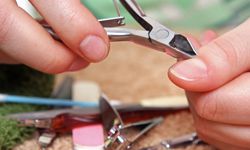Nothing finishes your look with a flourish like nice nails. You can try to achieve French tips at home, or you can leave it to the pros to shape, buff and paint your nails to perfection while you sit back and relax.
You may think a trip to the nail salon or the day spa is a great way to pamper your digits (or tootsies) after a long, hard week dealing with life's nail biting moments. If you do, you're in good company. The nail business is booming. Nail salons and day spas are popping up everywhere, and they're offering more options than ever before. Whether you want gel nails (a big seller these days) or a classic manicure, you'll find the services and styles you're looking for -- and maybe a bit more -- pretty easily.
Advertisement
Nail salons are getting some bad press these days for a few of their less desirable attributes, though, like unsanitary conditions that can make you sick. This doesn't mean you should invest in a UV light and a bag full of supplies and try to perform all the new nail techniques yourself -- unless you're feeling adventurous. It does mean you should use some caution and common sense before you choose a salon or slide your credit card across the counter with a tastefully tinted fingernail.

